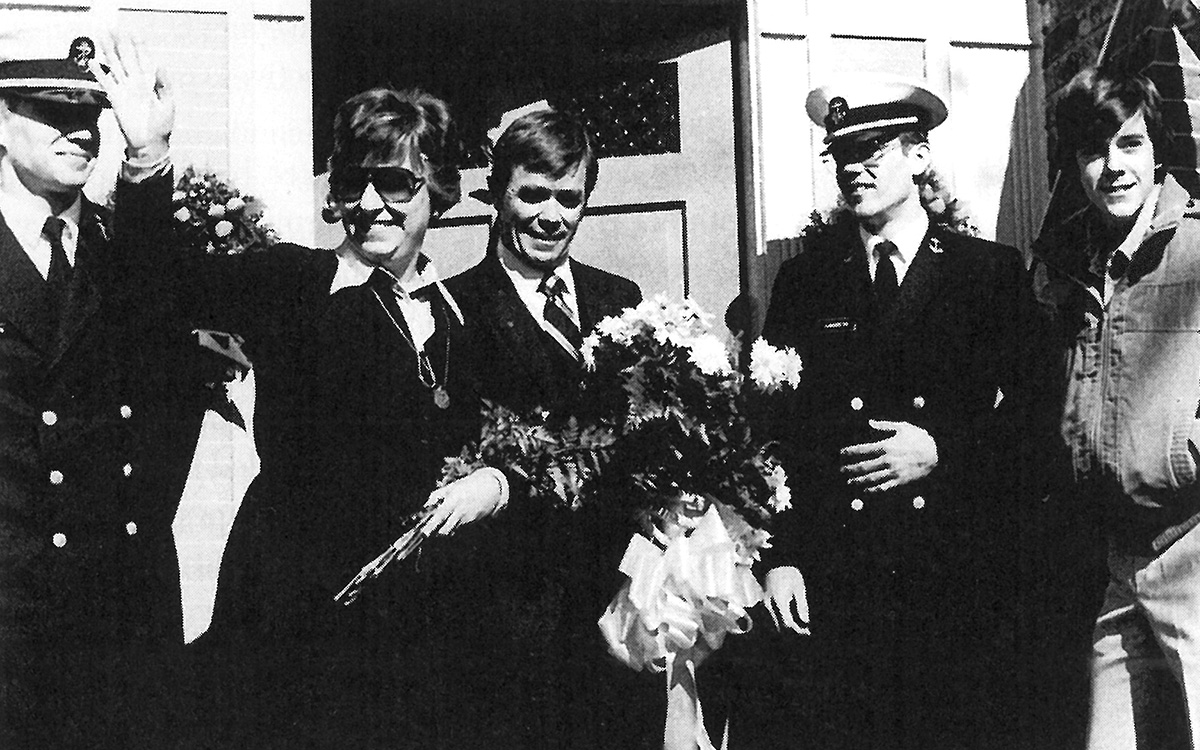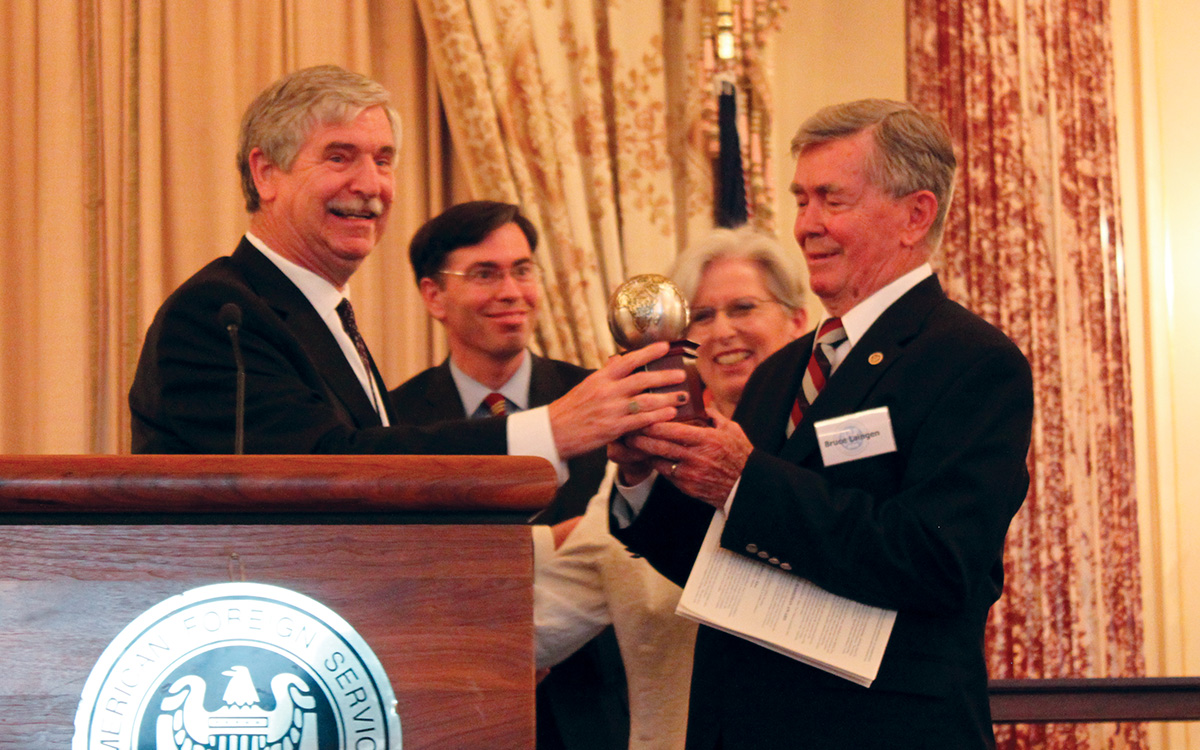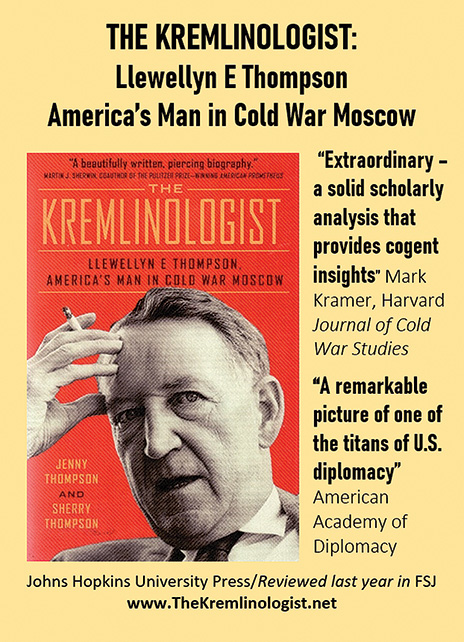The Perfect Professional: Lowell Bruce Laingen 1922-2019
BY JOHN LIMBERT

Ambassador Laingen at the White House following his return from Iran with Vice President George H.W. Bush, First Lady Nancy Reagan and President Ronald Reagan, Jan. 27, 1981.
Courtesy of the Laingen Family
I did not know Bruce Laingen before I had the honor and privilege of working for him as a political officer in Tehran, where he was chief of mission. I first met him there on Aug. 18, 1979.
In my first days at post, I saw that Bruce Laingen represented the best of our Service. For him the Foreign Service meant: take care of your people; listen to your host country; report the truth; and carry out American policy with honor, humanity and principle. He told me, “You know what you need to do. Do it.” Then he added, “I’m jealous. I wish I was, like you, free to travel everywhere and talk to everyone.”
His assignment in Tehran was to maintain some kind of orderly relationship with whatever system was going to succeed the monarchy. Despite the history of close U.S.-Pahlavi family relations, Washington could not abandon Iran after its revolution. Iran remained important to the United States for its oil, as a customer for U.S. exports and, most important, as a key part of an anti-Soviet alliance.
A Challenging Mission
Bruce Laingen’s mission was, to put it mildly, challenging. When the Islamic Revolution failed to deliver the promised paradise to Iranians, America—and Bruce Laingen—was the scapegoat. First, we were still there, in our large compound and massively ugly buildings (“Henderson High”) in downtown Tehran. Second, things were not going well. There were violent clashes in ethnic-minority regions. There were brawls between Islamist and leftist gangs in offices, schools and universities. Someone had to be responsible, so all problems were attributed to “American mercenaries.”
The Iranian media—under strong leftist influence—spouted ugly personal vitriol against him. But he never gave up. In July 1979, in the clearest language, he had warned Washington against admitting the Shah of Iran to the United States. His prophetic message said: “It may be the right thing to do, but not now, while Iran is still in chaos.” He predicted three results from admitting the shah:
- The moderate provisional government of Mehdi Bazargan will collapse.
- Any chance of normal U.S.-Iranian relations will disappear.
- The U.S. embassy will be lost.
He was right on all points, but in October 1979, when the U.S. president agreed to admit the shah, Bruce Laingen’s wise and prophetic advice was ignored.
I remember two special stories. In 1980, while he, Regional Security Officer Mike Howland and Political Officer Victor Tomseth were detained at the Iranian Foreign Ministry, Swiss Ambassador Erik Lang delivered a diplomatic bag with blank employee evaluation reports (EERs) for all embassy employees. Bruce and his colleagues patiently wrote reports on everyone, returned them to Ambassador Lang, who forwarded them to the State Department via the Swiss embassy in Washington.
A few months later I read in a letter from home: “Congratulations. You’ve been promoted.” I never knew how it happened until we were freed, and I learned the story. It is the best EER I ever received, and I had nothing to do with its composition.
The second story involved Bruce Laingen’s meeting with Mohammad Shirvani, a young Iranian filmmaker visiting Washington in the summer of 2007. (In those less hysterical days, such exchanges were still possible.) After a conversation at Bruce and Penne’s Bethesda home, he invited Shirvani to a July 4 neighborhood gathering and introduced him to the neighbors. To put it mildly, the residents were shocked to see an Iranian filmmaker at their party. That July 4 conversation— in which Bruce says that, after 30 years of pointless estrangement, Iran and the United States must find a way to talk to each other—became the most moving section of Shirvani’s documentary 444 Days.

The Laingen family gathered in front of their home after Ambassador Laingen’s return from Iran, Jan. 28, 1981. From left: Chip, Penne, Bruce, Bill and Jim.
Courtesy of the Laingen Family
The Perfect Professional
Bruce never gave up seeking some way for Iranians and Americans to stop shouting at each other and begin talking. He never carried a grudge, and saw the good in everyone. When he was chairperson of AFSA’s awards committee, he once suggested we consider Henry Kissinger for the association’s “Lifetime Contributions to American Diplomacy” award. He seemed surprised when the response from the group ranged from embarrassed silence to “Over my dead body.” Someone even pointed out to him that Kissinger was partly responsible for President Jimmy Carter’s disastrous decision to admit the deposed Shah of Iran in 1979.
As was typical of him, Bruce just smiled and said, “Well, he did some good things, too.”
It was sad that Bruce’s “mission impossible” in Tehran ended so tragically with the attack on the embassy and prolonged hostage crisis. What was so striking about Bruce was that, with all the fury and madness around him, he never stopped being an optimist and the perfect professional.
I am proud to have known him as a boss, a colleague and a friend.
As the Iranians say, Ruh-heshaan Shaad. May his spirit be joyful.
A Lifetime of Contributions to American Diplomacy

Ambassador Bruce Laingen receives AFSA’s Award for Lifetime Contributions to American Diplomacy on June 24, 2010. John Limbert, at left, presented the award; AFSA Executive Director Ian Houston and President Susan Johnson look on.
On June 24, 2010, Ambassador Lowell Bruce Laingen received the American Foreign Service Association’s highest award, the Award for Lifetime Contributions to American Diplomacy, in recognition of his distinguished 38-year Foreign Service career and a lifetime of public service.
Ambassador Laingen served in the U.S. Navy from 1943 to 1946. He joined the U.S. Foreign Service in 1949, and served in Germany, Iran, Pakistan, Afghanistan and Malta, where he was U.S. ambassador from 1977 to 1979. Later that year he returned to Tehran on a temporary basis as chargé d'affaires, but within months he was taken hostage when Iranian protestors overran the U.S. embassy and held him captive, with others, for 14 months. For his leadership and courage during that ordeal, he received the State Department’s Award for Valor and the Defense Department’s Medal for Distinguished Public Service.
From 1981 to 1987, Ambassador Laingen served as vice president of the National Defense University, a post traditionally held by a senior diplomat. He retired from the Foreign Service in 1987.
That year he was elected to AFSA’s Governing Board as a retiree representative and appointed chairman of the AFSA Awards Committee (which later became the Awards and Plaques Committee). It was a post he would hold for two decades. In gratitude for his distinguished and dedicated service, the association gave Ambassador Laingen a special award of appreciation in 2006. As a Journal report on that ceremony noted: “During his tenure, he succeeded in greatly improving the standing of the AFSA awards and consistently provided wise guidance.” The association remains grateful for his generous assistance.
From 1991 to 2006, Ambassador Laingen rendered similarly exemplary service as president of the American Academy of Diplomacy, the nonprofit, nonpartisan organization dedicated to fostering the highest standards in the conduct of diplomacy. He was honored with AAD’s Excellence in Diplomacy Award on retirement from that position.
In addition, Ambassador Laingen served as executive director of the National Commission on the Public Service (the Volcker Commission) from 1987 to 1990, and in 1998 held the Sol Linowitz Chair in International Relations at Hamilton College in New York, where he taught a seminar on the Iranian Revolution. He continued to do public speaking and served on the boards of A Presidential Classroom for Young Americans, the Mercersburg Academy in Pennsylvania, No Greater Love and the National Defense University Foundation.
—Susan B. Maitra




